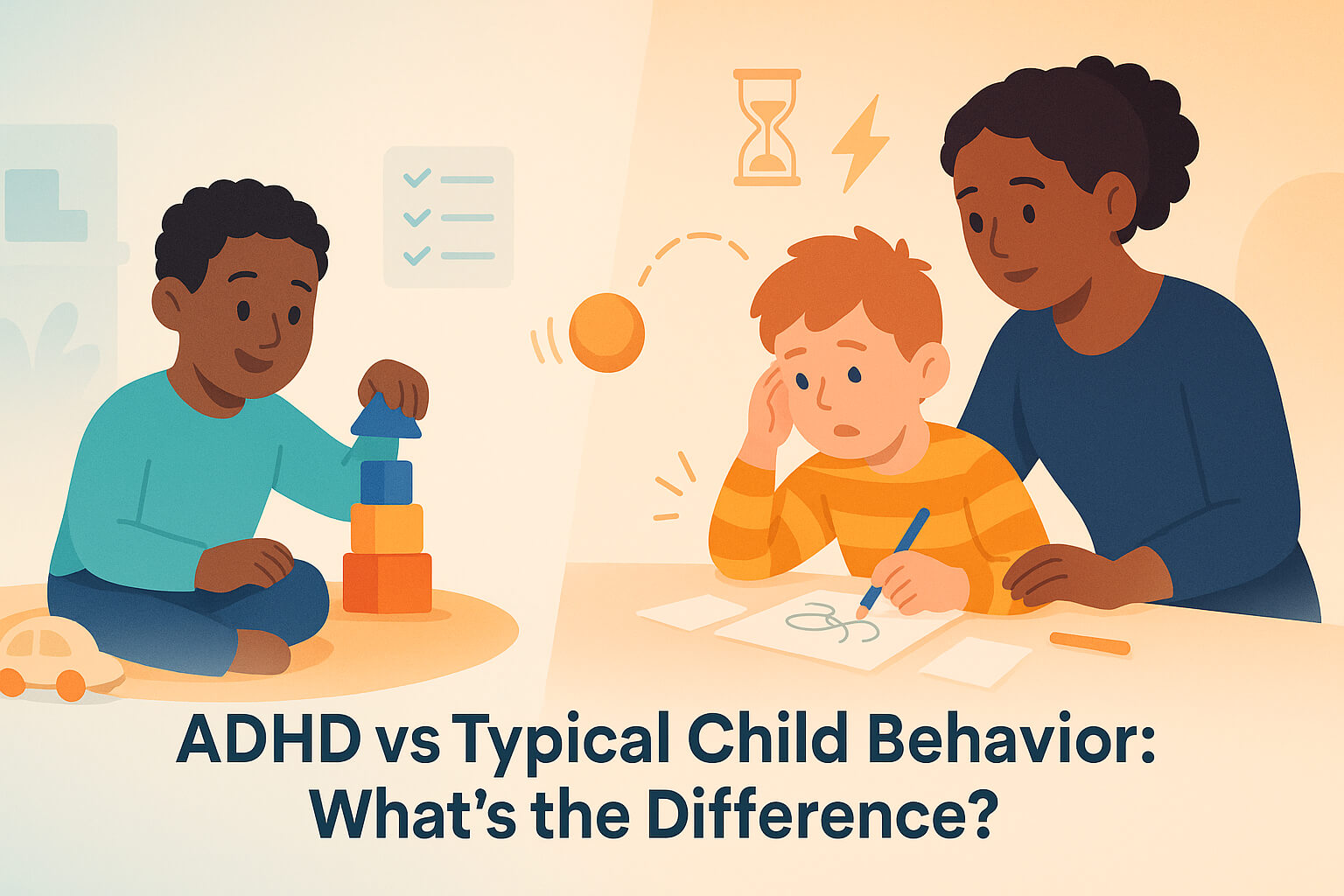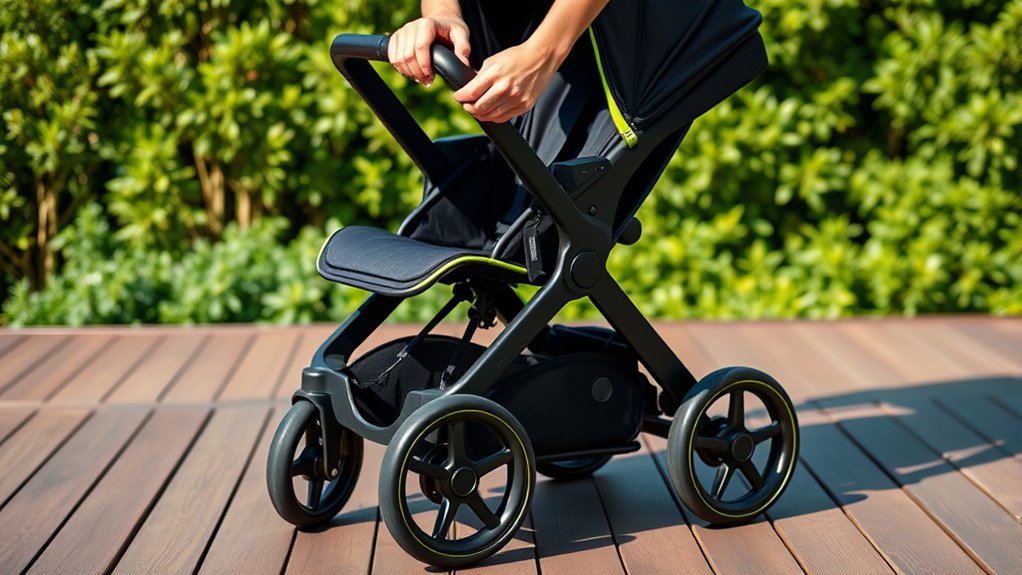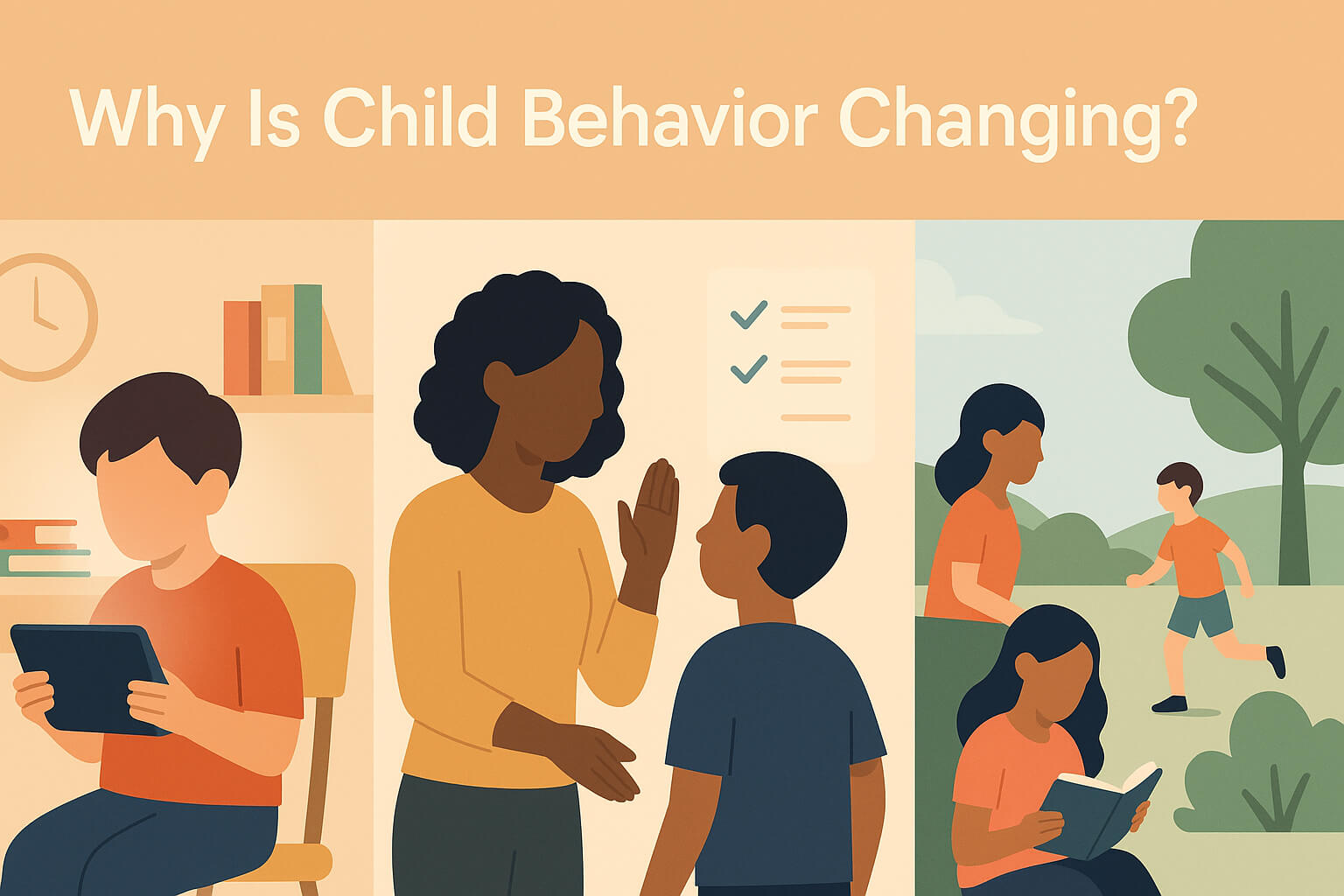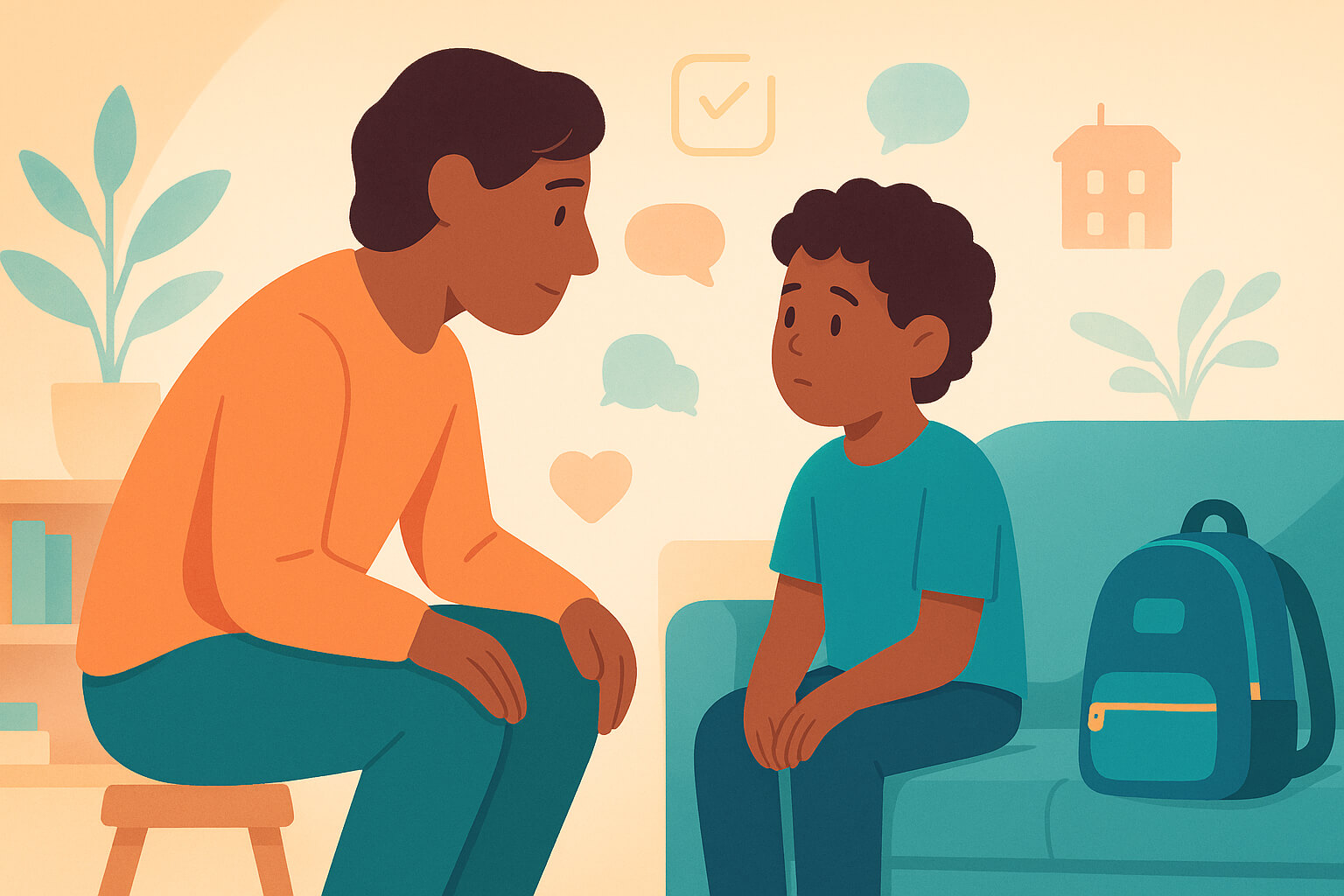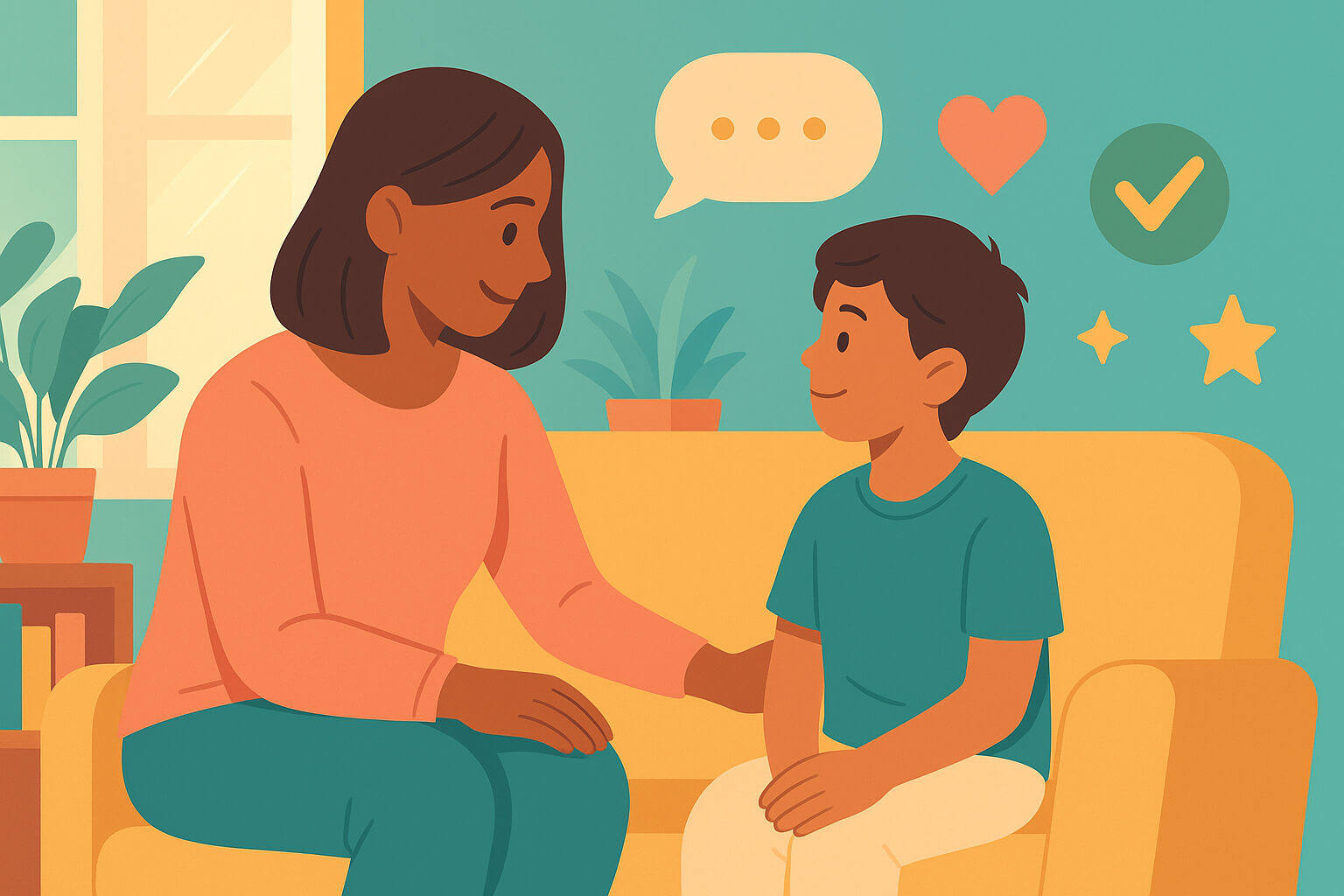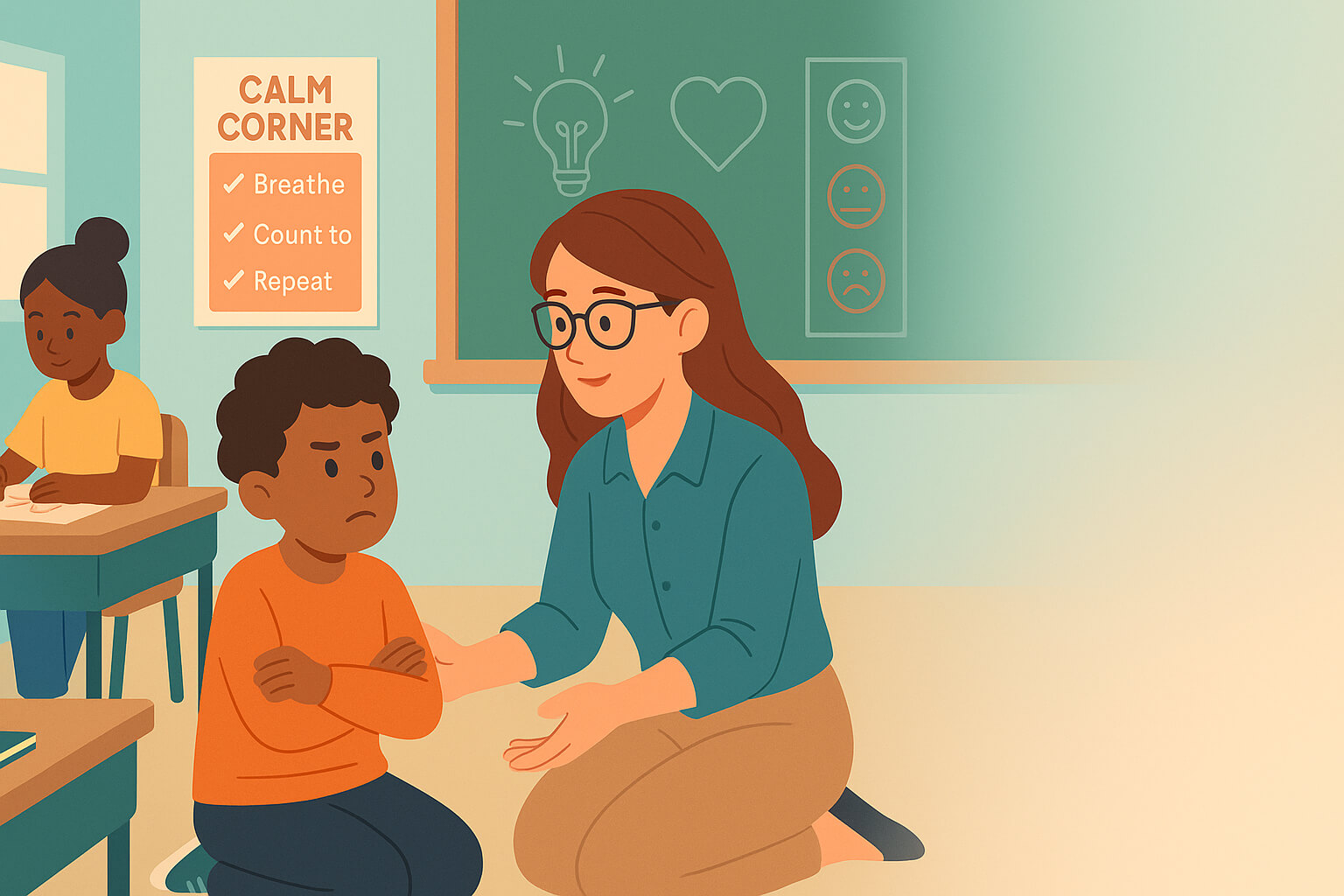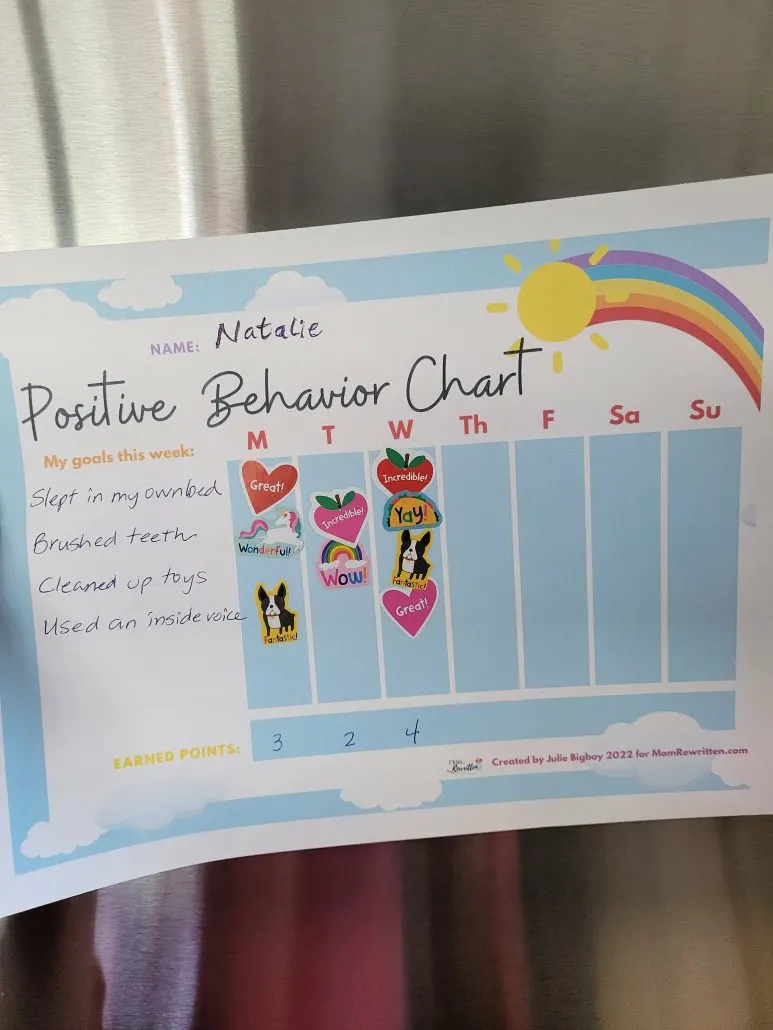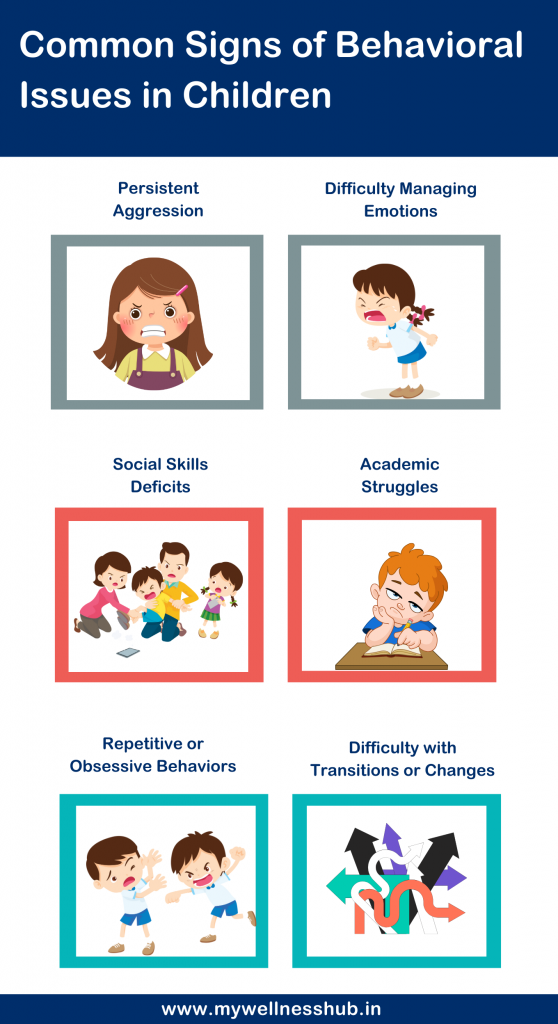Have you ever wondered if your child’s behavior is just part of being a kid or if it could be something more? It’s not unusual for children to be energetic, forgetful, or even a little impulsive at times.
But when does this cross the line into something like ADHD? Understanding the difference between ADHD and typical child behavior can feel overwhelming, especially when you’re trying to figure out what’s best for your child. We’ll break it down for you in simple terms.
You’ll learn how to spot key differences, what signs to watch for, and how to feel more confident in knowing whether your child’s actions are part of normal development or something that may need closer attention. Keep reading—because the answers you’re looking for might just bring you the clarity and peace of mind you’ve been seeking.
Signs Of Hyperactivity
Hyperactivity is one of the core traits of ADHD in children. It often manifests as constant motion, restlessness, or difficulty staying still. While all children have bursts of energy, hyperactivity in ADHD can be more intense and persistent. Understanding the signs can help differentiate between ADHD and typical child behavior.
Excessive Movement
Children with ADHD often struggle to stay seated for long. They may fidget, squirm, or leave their seat even during structured activities. This restlessness can appear in settings like classrooms or family meals.
Difficulty Playing Quietly
Children with ADHD may find quiet activities challenging. They often speak loudly or make unnecessary noise during play. Their energy can disrupt group activities or quiet time.
Constant Talking
Talking nonstop is another common sign of hyperactivity in ADHD. Children might interrupt conversations or speak out of turn. This behavior often occurs even after reminders to wait or stay quiet.
Impulsive Physical Actions
Children with ADHD may frequently climb, jump, or move inappropriately. These actions often occur in unsafe or unsuitable environments. Their need to move can outweigh awareness of rules or risks.
Persistent Restlessness
Unlike typical children, those with ADHD may rarely appear calm. They often bounce between activities without completing them. This constant restlessness can make it hard to focus on tasks.
Attention Challenges
Attention difficulties are a common concern for parents of young children. Many wonder if their child’s behavior is typical or a sign of ADHD. While all kids can struggle with focus, ADHD-related attention challenges go beyond occasional distractions. Understanding these differences can help parents identify unique patterns in their child’s behavior. In clinical practice, diagnosis relies on DSM-5-TR criteria—symptoms persisting ≥6 months, present in two or more settings, with several symptoms beginning before age 12—assessed using information from parents/teachers and a clinician exam (CDC, 2024-10-03; APA DSM-5-TR, 2022).
Short Attention Span
Typical children often lose focus during long or uninteresting tasks. They may get distracted but can return to their activity with reminders. Kids with ADHD struggle to maintain attention even on exciting or shorter tasks. Their attention shifts frequently, making it hard to complete activities.
Difficulty Staying Organized
All kids may forget to pack their school bag or lose toys. This happens occasionally and improves with age. Children with ADHD often face constant challenges in organizing their belongings or thoughts. They may misplace items daily or leave tasks unfinished without realizing.
Trouble Following Instructions
Typical kids may ignore instructions if they seem boring or unclear. They usually understand directions after repetition or clarification. Children with ADHD struggle to process multi-step instructions. They may forget steps or get distracted halfway, even with repeated guidance.
Frequent Daydreaming
Many kids daydream during activities they find dull. This is normal and temporary. Children with ADHD often daydream during tasks requiring focus, even when they enjoy them. Their minds wander frequently, impacting schoolwork or social interactions.
Hyperfocus On Interests
Some children with ADHD experience hyperfocus, which is intense attention on favorite activities. Typical kids may focus deeply on hobbies but can switch to other tasks when required. ADHD-related hyperfocus can make transitioning to other activities difficult, even if urgent.
Impulsivity In Actions
Impulsivity is a common trait in children as they grow and learn. It’s natural for young kids to act without thinking occasionally. They might interrupt conversations, grab toys without asking, or forget to wait their turn. These behaviors are a normal part of childhood development. Yet, for children with ADHD, impulsivity appears more often and in a stronger form. It can impact their daily lives, relationships, and learning.
Understanding the difference between typical impulsive actions and ADHD-related impulsivity helps parents and teachers respond better.
Typical Impulsivity In Children
Most children act impulsively while exploring the world around them. They might shout answers in class or act out of curiosity. These actions happen because their self-control is still developing. Over time, they learn to stop and think before acting. Adults guide them through gentle correction and teaching.
For example, a typical child might interrupt a conversation occasionally. After being reminded, they may pause and wait their turn next time.
Impulsivity In Children With Adhd
Children with ADHD often struggle more with self-control. Their impulsive actions are frequent and extreme. They may grab objects, blurt out comments, or act without considering consequences. These behaviors are not due to a lack of understanding but difficulty managing impulses.
For instance, an ADHD child might interrupt repeatedly, even after reminders. They may act without realizing they are disrupting others. This happens because their brains process impulses differently.
Impact Of Impulsivity On Social Interactions
Impulsivity can affect how children interact with others. A typical child may occasionally annoy peers by being impatient. Yet, they often recognize the issue and adjust their behavior.
In contrast, children with ADHD might struggle to adapt. Their impulsive actions can lead to misunderstandings or conflicts. Peers might see them as rude or disruptive, causing social challenges.
Recognizing Patterns
Observing patterns in behavior helps differentiate typical impulsivity from ADHD. Occasional impulsive actions are normal in young children. They tend to decrease as kids grow older and gain self-control.
For children with ADHD, impulsivity often persists and affects many areas. It stands out in classrooms, at home, and during play. Identifying these patterns can help parents seek the right support for their child.

Credit: ilslearningcorner.com
Behavioral Patterns Over Time
Understanding the difference between ADHD and typical child behavior requires looking at how behaviors unfold over time. Kids are naturally energetic and easily distracted, so how can you tell what’s typical and what might point to ADHD? The key lies in patterns—persistent and intense behaviors that stand out compared to their peers.
Behavioral Consistency Vs. Developmental Phases
All kids go through phases. One week they might be obsessed with dinosaurs, and the next, they’ve moved on to outer space. These shifts are normal as children grow and explore their interests.
With ADHD, behaviors don’t just come and go. They remain consistent and often disrupt daily life. A child with ADHD might struggle with focus or impulsivity in ways that don’t improve over time or with reminders.
Ask yourself: Is this a phase, or is it a pattern that persists despite age-appropriate interventions like structure or guidance?
Intensity Of Reactions
Children with typical behavior might throw a tantrum when they don’t get their way. But these moments usually fade as they learn emotional regulation. Their reactions match the situation and gradually lessen with age.
In contrast, kids with ADHD often have more intense responses. A small frustration—like not being able to find a favorite toy—can trigger an outsized emotional reaction. These intense moments can make everyday routines feel like an uphill battle for parents.
Have you noticed this in your own child? Think about the scale and frequency of their reactions compared to other kids their age.
Ability To Adjust With Support
Most children, when given clear expectations and gentle reminders, can adjust their behaviors. They might need a nudge, but they’re able to follow through eventually. For example, being reminded to complete homework might lead to them sitting down and finishing the task.
With ADHD, even repeated guidance doesn’t always help. A child might try but still get distracted or struggle to stay on task. This can feel exhausting for them—and for you—because the usual strategies don’t seem to stick.
Impact On Social Relationships
Friendships can be tricky for any child. One day they’re best friends, the next they’re arguing over who gets the last cookie. That’s part of learning how to navigate relationships.
For kids with ADHD, social struggles often go beyond typical ups and downs. They may interrupt conversations, act impulsively, or have trouble picking up on social cues. Over time, this can affect their ability to form lasting friendships.
Consider how your child interacts with peers. Do they often struggle to fit in, or are their challenges similar to what you see in other kids their age?
What To Watch For
If you’re unsure whether your child’s behavior aligns with ADHD or is within the range of typical development, keep track of patterns. Write down what you observe over a few weeks. Look for consistency in struggles with focus, impulsivity, or emotional regulation.
Pay attention to how their behavior compares to other children in the same age group. If the challenges are persistent, intense, and disruptive, it may be time to seek professional advice. Early intervention can make a big difference in helping your child thrive. Clinicians evaluate symptoms across settings and over time using DSM-5-TR criteria; reports from parents/teachers are essential, and standardized rating scales (e.g., Vanderbilt) may be used to organize information but are not diagnostic on their own (CDC, 2024-10-03; AAP Guideline, 2019; AAP Vanderbilt Scales).
What have you noticed about your child’s behavioral patterns? Reflecting on these nuances could bring clarity—and possibly a much-needed next step.
Impact On Social Interactions
Children with ADHD often face unique challenges in social settings. Their behavior can differ significantly from that of their peers. These differences may influence how they form and maintain friendships. Understanding these impacts can help parents and caregivers provide better support.
Challenges With Listening And Waiting
Many children with ADHD struggle to listen during conversations. They may interrupt frequently or talk over others. Typical children usually learn to wait for their turn while speaking. This behavior can make it hard for ADHD children to connect socially. Friends may feel ignored or frustrated.
Difficulty Understanding Social Cues
Social cues like facial expressions and tone of voice are often missed by children with ADHD. They may misinterpret jokes or sarcasm, leading to confusion. Typical children usually pick up these cues as they grow. Misunderstandings can sometimes cause conflict or isolation for ADHD children.
Impulsivity In Social Settings
Impulsive actions are common among children with ADHD. They may grab toys or interrupt games without thinking. This can upset their peers or make group activities challenging. Typical children usually have better control over their impulses. This difference can affect how ADHD children are perceived by others.
Struggles With Emotional Regulation
Children with ADHD often have intense emotional reactions. They may cry or get angry quickly during disagreements. Typical children usually handle emotions more steadily as they mature. These strong reactions can sometimes push friends away or lead to misunderstandings.
Difficulty Maintaining Friendships
Long-term friendships may be harder for children with ADHD to maintain. Their impulsivity and misunderstandings can create barriers. Typical children usually find it easier to build lasting relationships. ADHD children may need extra support to navigate complex social dynamics.
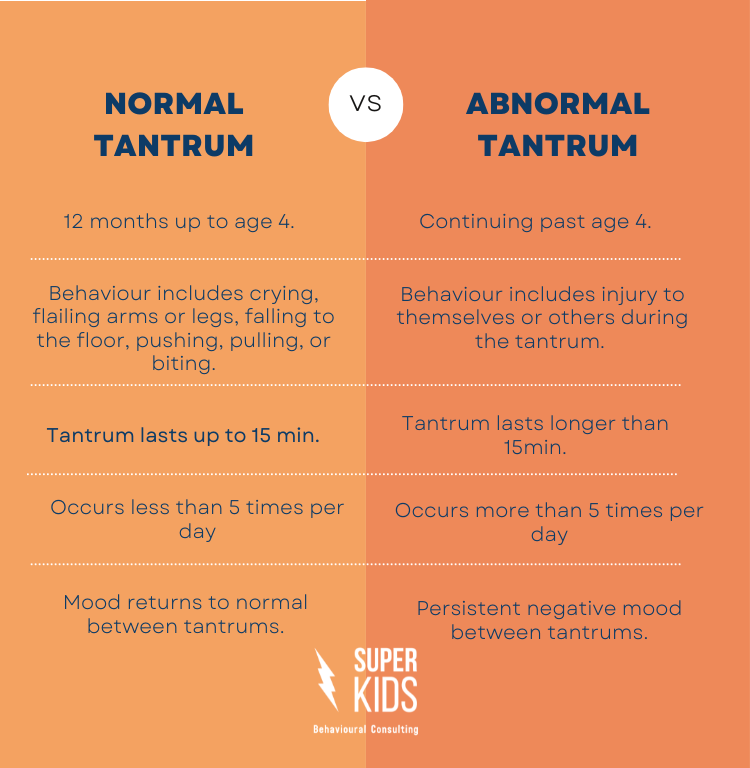
Credit: www.superkidsconsulting.com
When To Seek Professional Help
Every child has moments of distraction, impulsiveness, or endless energy. It’s part of growing up. But if you’re constantly questioning whether what you’re observing is typical or something more serious, it might be time to take a closer look.
Parents often wonder if their child’s behavior is just a phase or a sign of something bigger. Knowing when to seek help can make a significant difference in your child’s development and well-being. Let’s break it down into actionable steps.
1. Notice Patterns, Not Just Isolated Incidents
Kids have bad days—just like adults. But if you notice that your child consistently struggles with focus, self-control, or completing tasks, it’s worth paying attention. For example, if your child frequently forgets instructions or gets frustrated over simple tasks at home and school, this could indicate something more than typical behavior.
Ask yourself: Is this behavior happening across different environments? If it’s not just at home but also at school, during playdates, or in other settings, it may be time to consider professional guidance.
2. Look For Emotional Struggles
Emotional outbursts happen to every child, but excessive frustration, sadness, or anger over small things may signal deeper challenges. If your child seems overwhelmed or unable to regulate their emotions on a regular basis, don’t brush it off. Emotional struggles are often tied to ADHD and can interfere with their ability to thrive socially and academically.
Does your child frequently say things like, “I can’t do anything right” or “Nobody likes me”? Those are red flags that should not be ignored.
3. Evaluate The Impact On Daily Life
Ask yourself: How much is this behavior affecting your child’s everyday life? If your child regularly misses homework deadlines, has difficulty making friends, or struggles to follow routines, it’s worth taking action. ADHD often goes beyond behavior and impacts a child’s ability to manage life’s demands.
For example, if brushing their teeth or getting ready for school feels like a daily battle that leaves both of you drained, this might be more than typical childhood resistance.
4. Talk To Teachers And Caregivers
Teachers and caregivers spend a lot of time with your child and can provide valuable insights. If they’ve expressed concerns about your child’s focus, behavior, or social skills, take their observations seriously. They may notice trends you don’t see at home.
Collaborate with them to get a fuller picture of your child’s behavior. Are they struggling to sit still during lessons or having trouble sharing with peers? These details can help you decide whether professional help is needed.
5. Trust Your Instincts
No one knows your child better than you do. If something feels off, don’t second-guess yourself. Trust your gut and seek advice from a professional who can provide clarity and next steps.
Parenting comes with a lot of uncertainty, but ignoring your instincts can delay important interventions. Early support can prevent bigger challenges down the road.
6. Where To Start
If you’ve decided to seek professional help, start with your pediatrician. They can guide you through initial screenings and refer you to a child psychologist or psychiatrist if needed. You can also reach out to your child’s school counselor for additional resources and support. For U.S. families, the American Academy of Pediatrics recommends evaluation for children ages 4–18 when concerns arise, using DSM-based criteria and information from multiple settings (CDC, 2024-10-03; AAP Guideline, 2019).
Don’t feel overwhelmed by the process. Taking the first step is often the hardest, but it’s also the most important one for your child’s future.
U.S. safety note: If your child is in immediate danger or at risk of self-harm, call or text 988 (Suicide & Crisis Lifeline) or dial 911 for emergency help. (988 Lifeline).
Remember, seeking professional help doesn’t mean there’s something “wrong” with your child. It’s about giving them the tools they need to succeed and helping them feel understood and supported.
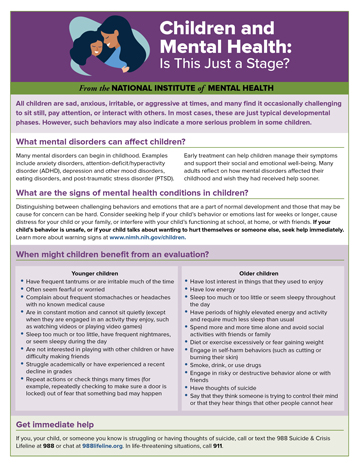
Credit: www.chconline.org
Frequently Asked Questions
How Is Adhd Different From Normal Childhood Behavior?
ADHD is characterized by persistent inattention, hyperactivity, and impulsivity, beyond typical childhood behavior patterns and developmental stages. It disrupts daily functioning and must meet DSM-5-TR criteria assessed by a qualified clinician (CDC, 2024-10-03; APA DSM-5-TR, 2022).
How Can You Tell The Difference Between An Adhd Child And A Typical Active Child?
ADHD children often struggle with focus, impulsivity, and emotional regulation, unlike typical active children who can follow instructions and stay engaged. ADHD behavior is persistent, affects daily life, and occurs in multiple settings, while typical active behavior is situational and age-appropriate. Clinicians gather information from parents/teachers and may use standardized rating scales (e.g., Vanderbilt) alongside interviews and exams (CDC, 2024-10-03; AAP Vanderbilt Scales).
Consulting a professional helps confirm ADHD diagnosis.
How Can You Tell The Difference Between Adhd And Bad Behavior?
ADHD involves persistent inattention, hyperactivity, and impulsivity, while bad behavior is often situational and deliberate. ADHD impacts daily functioning consistently and is diagnosed using DSM-based criteria evaluated across settings (CDC, 2024-10-03).
What Is The Typical Behavior Of A Child With Adhd?
A child with ADHD often shows hyperactivity, impulsiveness, and difficulty focusing. They may struggle with organization and staying on tasks. For children ages 4–16, six or more symptoms are required; for ages 17+, five or more (CDC, 2024-10-03).
Conclusion
Understanding the difference between ADHD and typical behavior is essential. It helps parents support their children better. ADHD involves persistent patterns that affect daily life. Typical behavior, on the other hand, varies with age and situations. Recognizing these differences can guide early intervention.
It also reduces unnecessary stress for families. Always seek professional advice if unsure. Trusting your instincts as a parent is important. Every child is unique and deserves understanding. Patience and awareness can make a big difference. With the right approach, children can thrive in their own ways.
